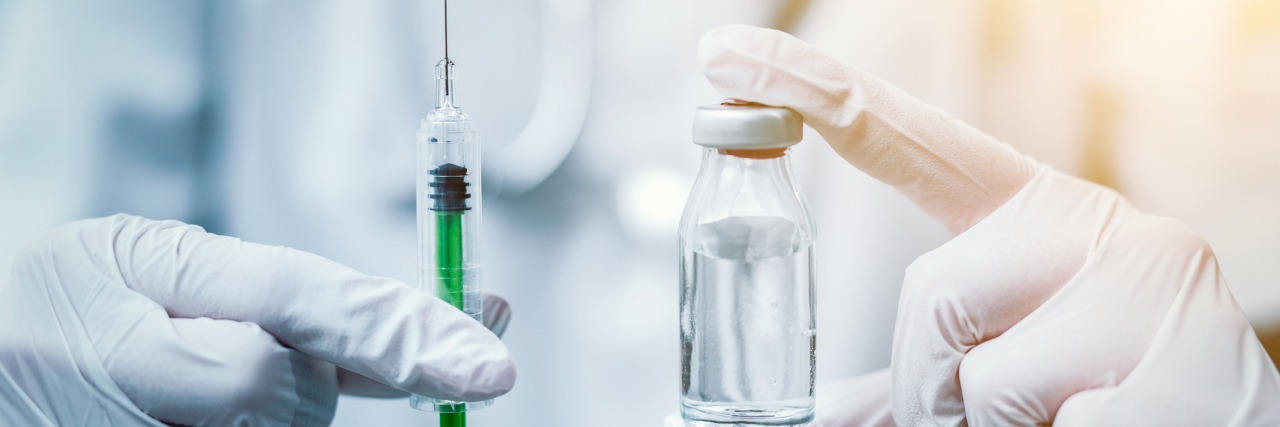Why People With Diabetes Aren't Using Eli Lilly's Cheaper Insulin
In March, pharmaceutical company Eli Lilly announced it would begin selling a generic version of its brand name insulin, Humalog, at half the price. This generic, called insulin lispro, cost $137.35 per vial, and is identical to Humalog except it’s about half the price. While the move was billed as an effort to make insulin more affordable, new data reveals it may not be having much of an impact for many people with diabetes.
As the Financial Times first reported earlier this month, according to recent data from GoodRx, an app that tracks prescription drug prices and offers coupons, 3% of insurance claims for Eli Lilly insulin were for insulin lispro, while 97% were for Humalog. Eli Lilly told Financial Times 5,300 prescriptions for insulin lispro were filled in the week ending July 19, while 136,000 prescriptions were filled for Humalog.
The problem appears to be twofold: For many people, the cheaper version isn’t actually cheaper or even an option with their insurance, and many patients, pharmacists and even doctors don’t seem to know insulin lispro exists.
The new generic is targeted at people who pay for insulin out of pocket or have to pay a percentage of the cost. So, people who don’t have insurance and pay the list price for insulin can now purchase insulin lispro at half the cost of Humalog, or if you have an insurance plan that covers insulin lispro and requires you to pay a percentage (for example, a high-deductible plan), your cost may go down.
But those who have insurance still may not reap any benefits from the cheaper generic. An Eli Lilly spokesperson told Financial Times that one in five commercial insurance plans and one in four Medicare plans covers insulin lispro, though he said the company is “aggressively working with payers” to make the drug more widely available. Express Scripts, one of the largest pharmacy benefit managers, doesn’t cover insulin lispro, because most of its plans charge patients a flat co-pay for insulin, so they would pay the same amount for Humalog or insulin lispro.
This means for a lot of patients, remaining on Humalog with their current insurance is still cheaper than buying insulin lispro out-of-pocket.
The second problem is many in the diabetes and medical community seem unaware there is now a cheaper generic Humalog, or are unable to access it or provide it. The Mighty asked four members of the Mighty community with type 1 diabetes if they had attempted to purchase the new insulin. None had, and two said they had not even heard of it. The Arizona Republic contacted 20 Arizona pharmacies and asked if they had the generic in stock. None of them did — some said they hoped it would be available soon, others didn’t know it existed and three said they could order the drug with a prescription. Another investigation by PharmacyChecker.com made a similar discovery.
Eli Lilly spokesman Greg Kueterman told The Arizona Republic that it could be an “awareness issue” since the drug is so new, and the company will continue their education efforts.
From a behind-the-scenes perspective, the reasons introducing a cheaper generic hasn’t resulted in any widespread increase in affordable insulin are complex. One problem is the rebate system. Pharmacy benefit managers (PBMs) like Express Scripts negotiate for manufacturers to pay PBMs some money back in exchange for offering the drugs to the PBM’s patients. As a result, drug companies increased their prices to make up for these rebates. The amount of revenue Humalog brings in is 1 billion dollars more than Eli Lilly actually takes home, according to Forbes.
Inmaculada Hernandez, assistant professor of pharmacy and therapeutics at the University of Pittsburgh, warned NPR back in March that offering a generic the way Eli Lilly has just gives insurers two options: pay for the brand name drug and get a higher rebate, or pay for the generic and get a smaller rebate.
“What we really need to get insulin prices down is to get generics into the market, and we need more than one,” she said, which would increase competition.
Other issues standing in the way of cheaper insulin include the cost, difficulty and lack of incentive for any drug company to create a cheaper generic, a patent system that gives companies a monopoly around their drugs, and changes to insurance policies that leave patients paying more.
Although insulin lispro is half the list price of Humalog, $137.35 per vial (you need anywhere from one to six vials per month when you have diabetes) is still expensive for a lot of people.
Some politicians and diabetes advocates are working to find solutions to the insulin affordability crisis. In May, Colorado became the first state to prevent insurance companies from charging more than $100 for a 30-day supply of insulin, regardless of the amount or type of insulin they require.
In July, a group of U.S. senators introduced the Insulin Price Reduction Act, which (if it passes) would set up incentives for manufacturers to not increase their prices beyond the cost of the same product in 2006 and require private insurance plans to allow people with high-deductible plans to pay the standard copay for insulin even if they haven’t hit their deductible.
Have you tried to switch to the new half-price insulin Lispro? #Diabetes
Getty photo by scyther5

